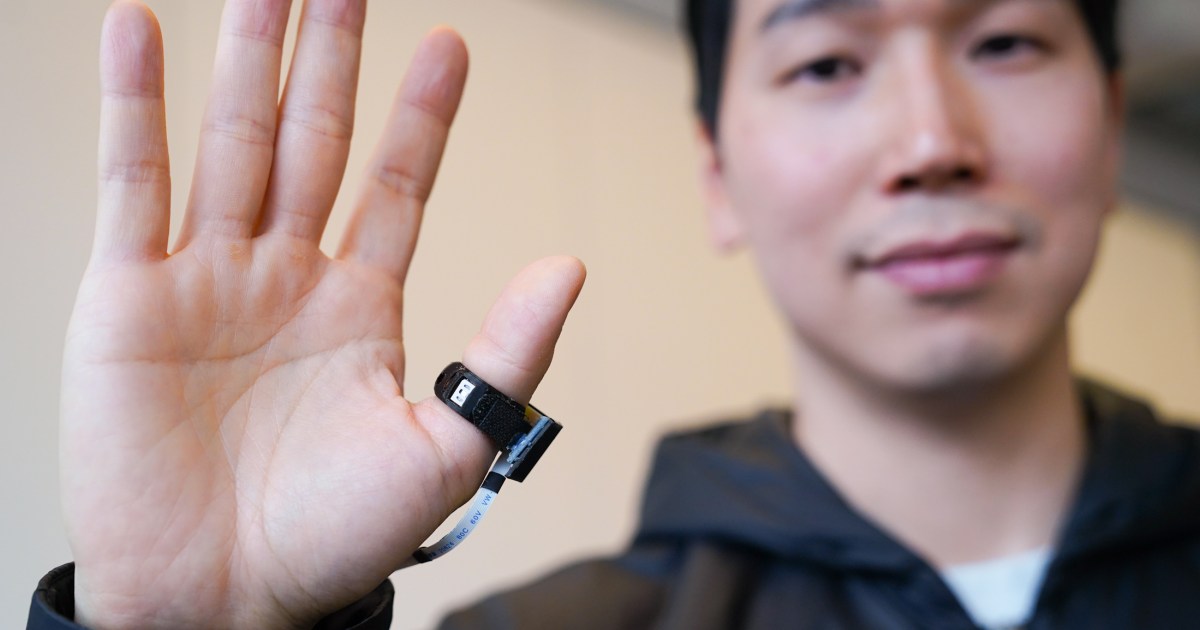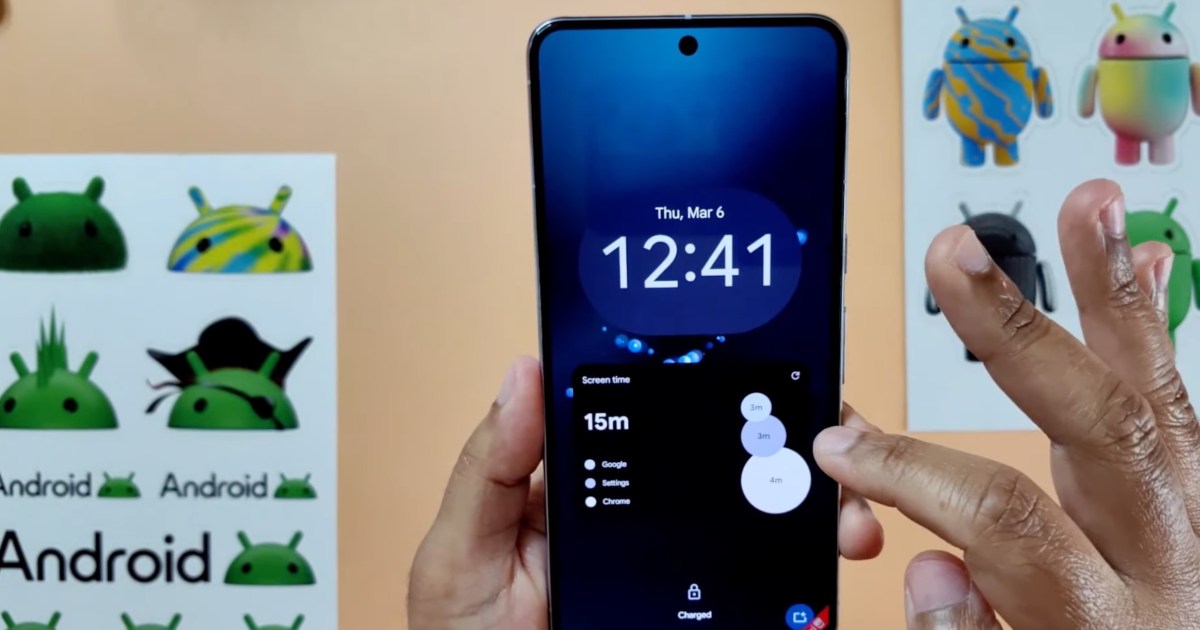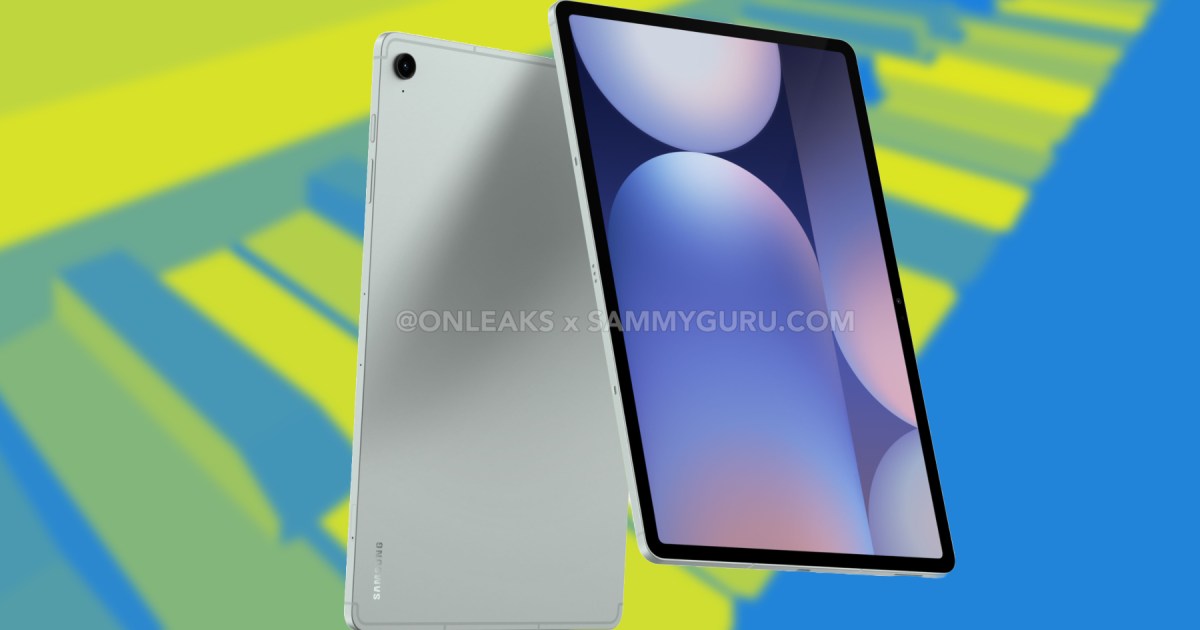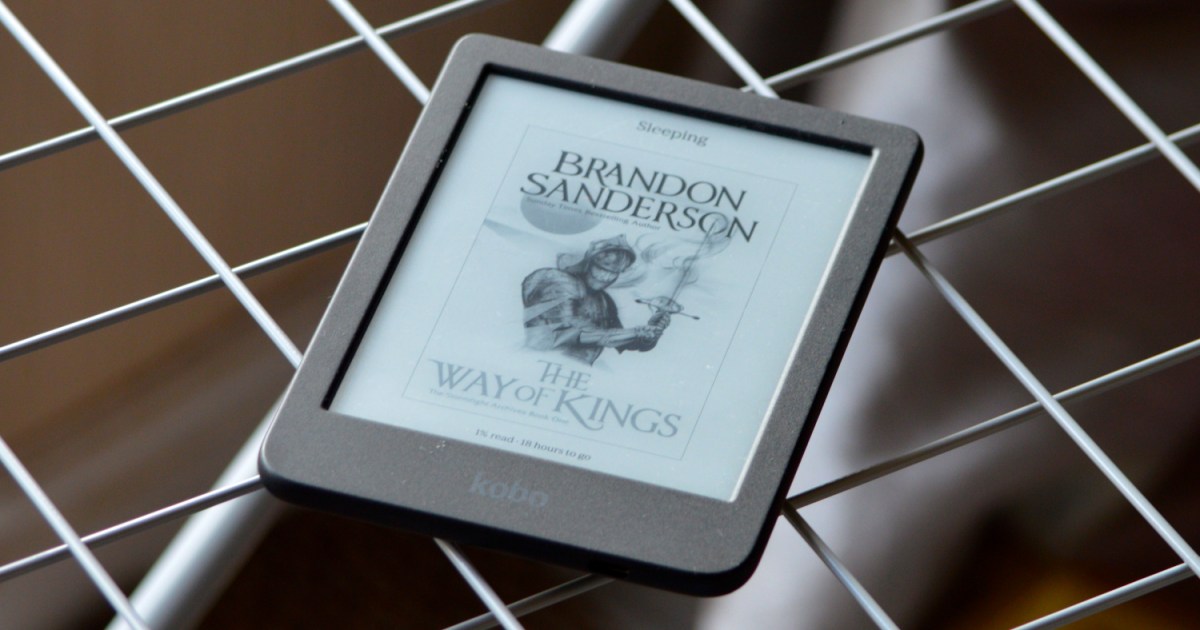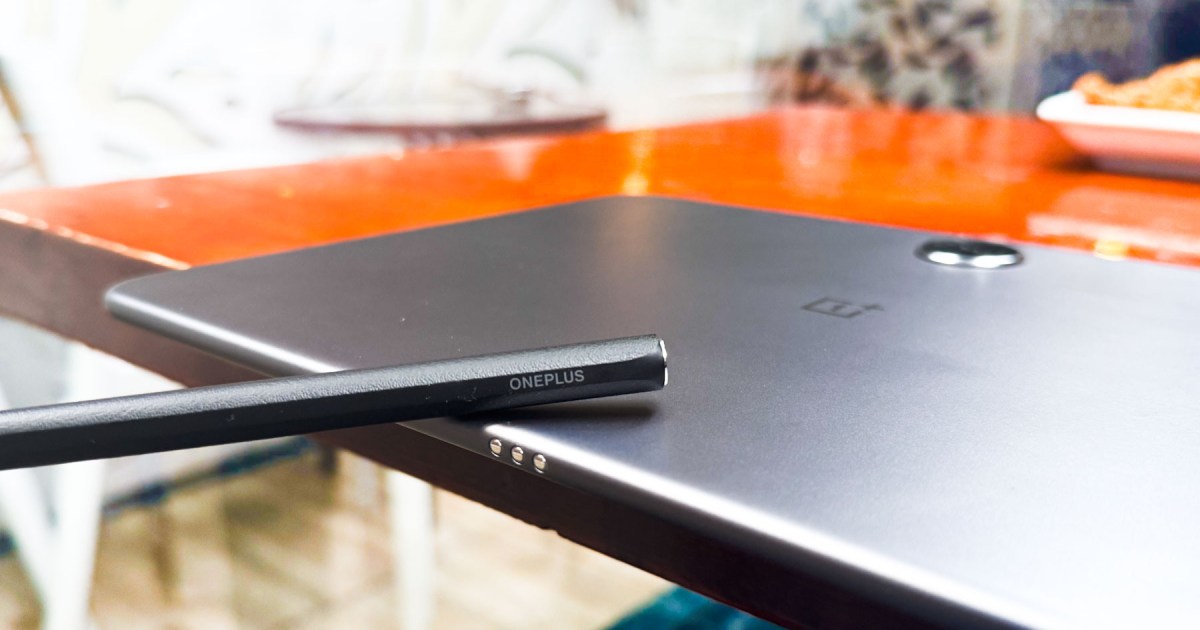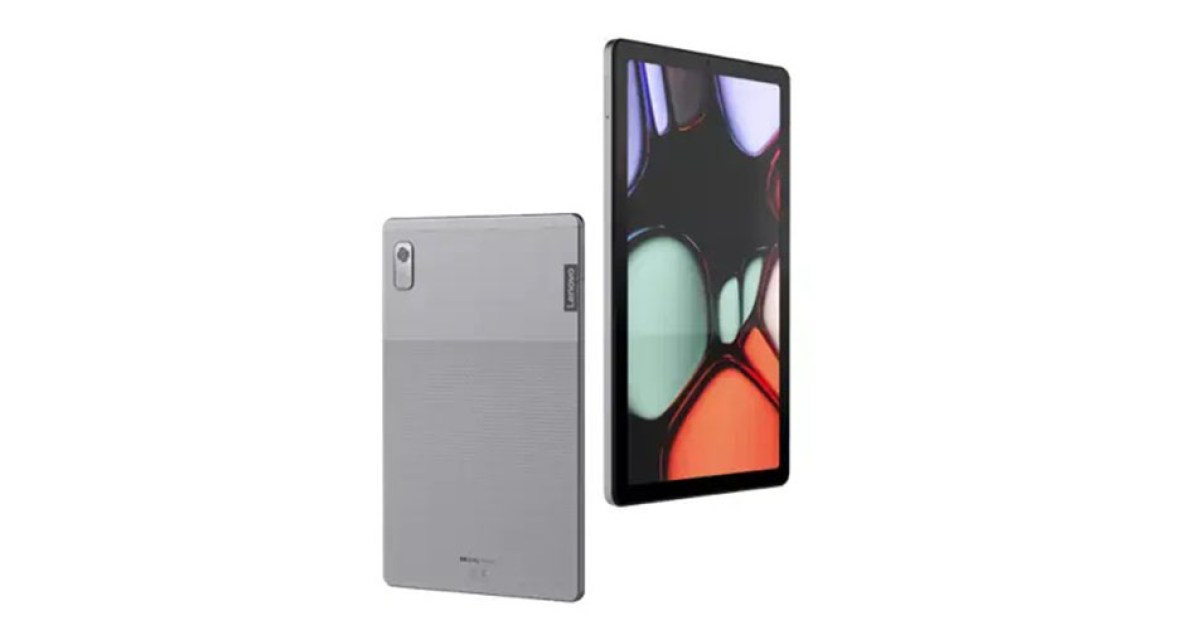Smart ring technology has advanced significantly, moving beyond health tracking into new realms of accessibility. Researchers at Cornell University have developed SpellRing, a smart ring capable of translating American Sign Language (ASL) fingerspelling into text in real time. This innovative technology offers a potential breakthrough for communication accessibility and convenient text input.
SpellRing, worn on the thumb, uses a combination of a speaker, microphone array, and a gyroscope. The speaker emits audio waves, which are affected by hand movements, and the microphone array captures these changes. Simultaneously, the gyroscope records angular data. This combined data is then processed by a custom deep-learning algorithm to recognize the full 26 letters of the English alphabet.
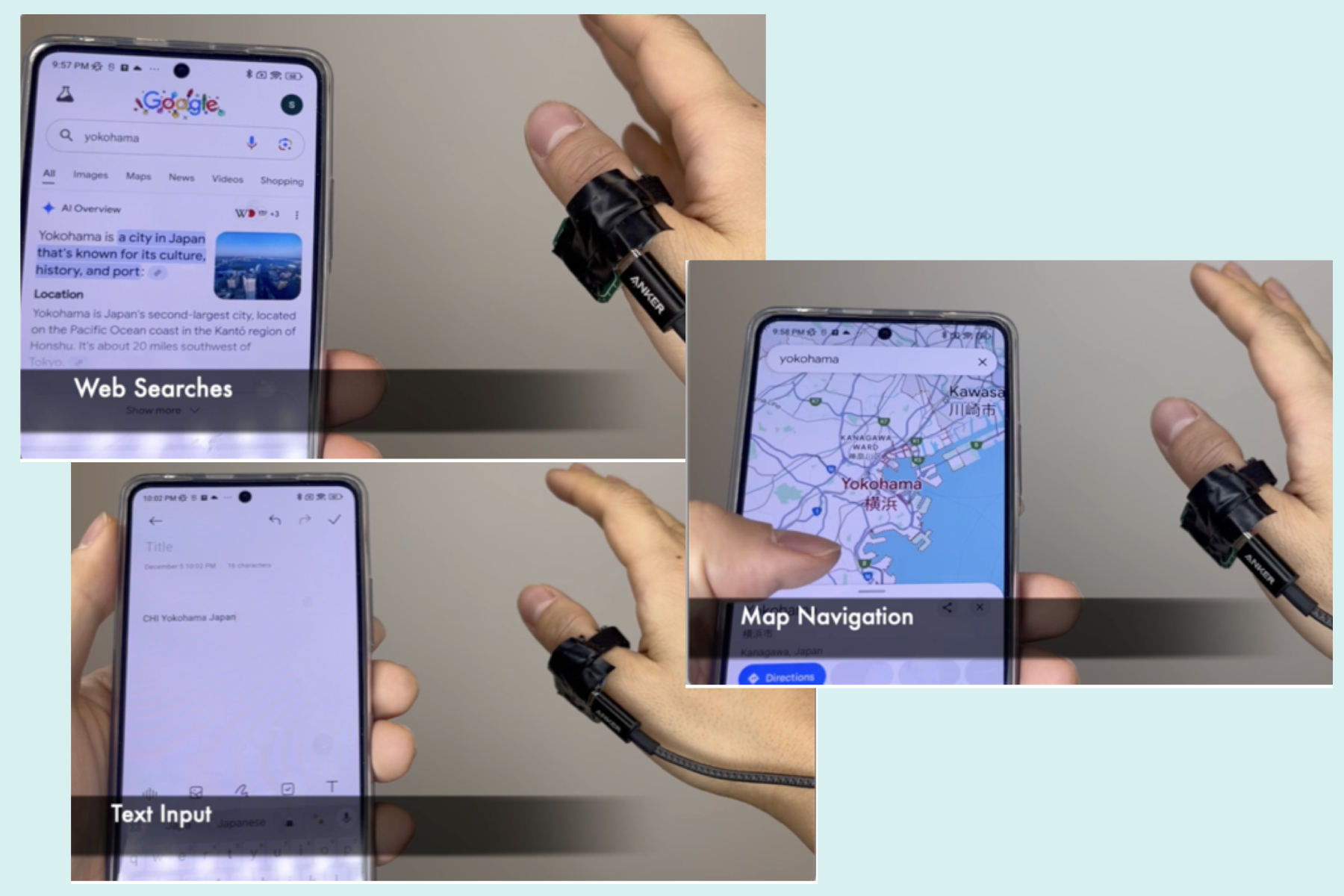 SpellRing showing input on a phone.
SpellRing showing input on a phone.
Affordable Accessibility
One of the most promising aspects of SpellRing is its affordability. The prototype cost is approximately $30, and the team anticipates further cost reductions with mass production. This makes the technology potentially accessible to a wider audience. The ring itself is 3D-printed, roughly the size of a quarter, and relies on the deep-learning algorithm to interpret the sonar-like image created by the sensor data. In testing, volunteers using SpellRing spelled out approximately 20,000 English words.
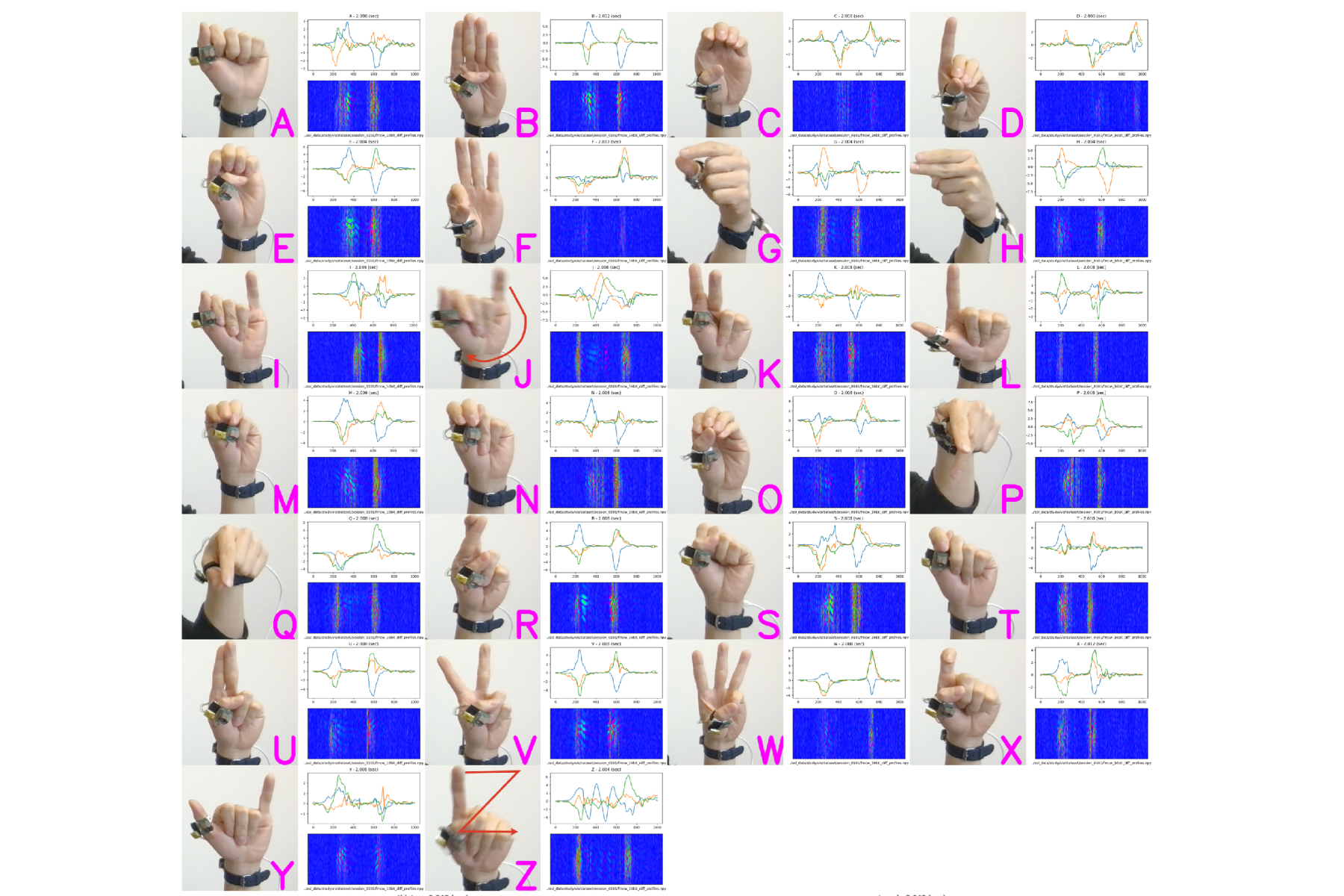 SpellRing recognizing English letters.
SpellRing recognizing English letters.
Impressive Accuracy and Future Development
Tests with both ASL learners and experienced signers showed an impressive accuracy rate of up to 92% in converting signs to text. According to Hyunchul Lim, the lead author of the research paper, “ASL is a very complicated, complex visual language.” The team is currently focusing on refining the algorithms to recognize whole words and phrases, expanding beyond individual letters.
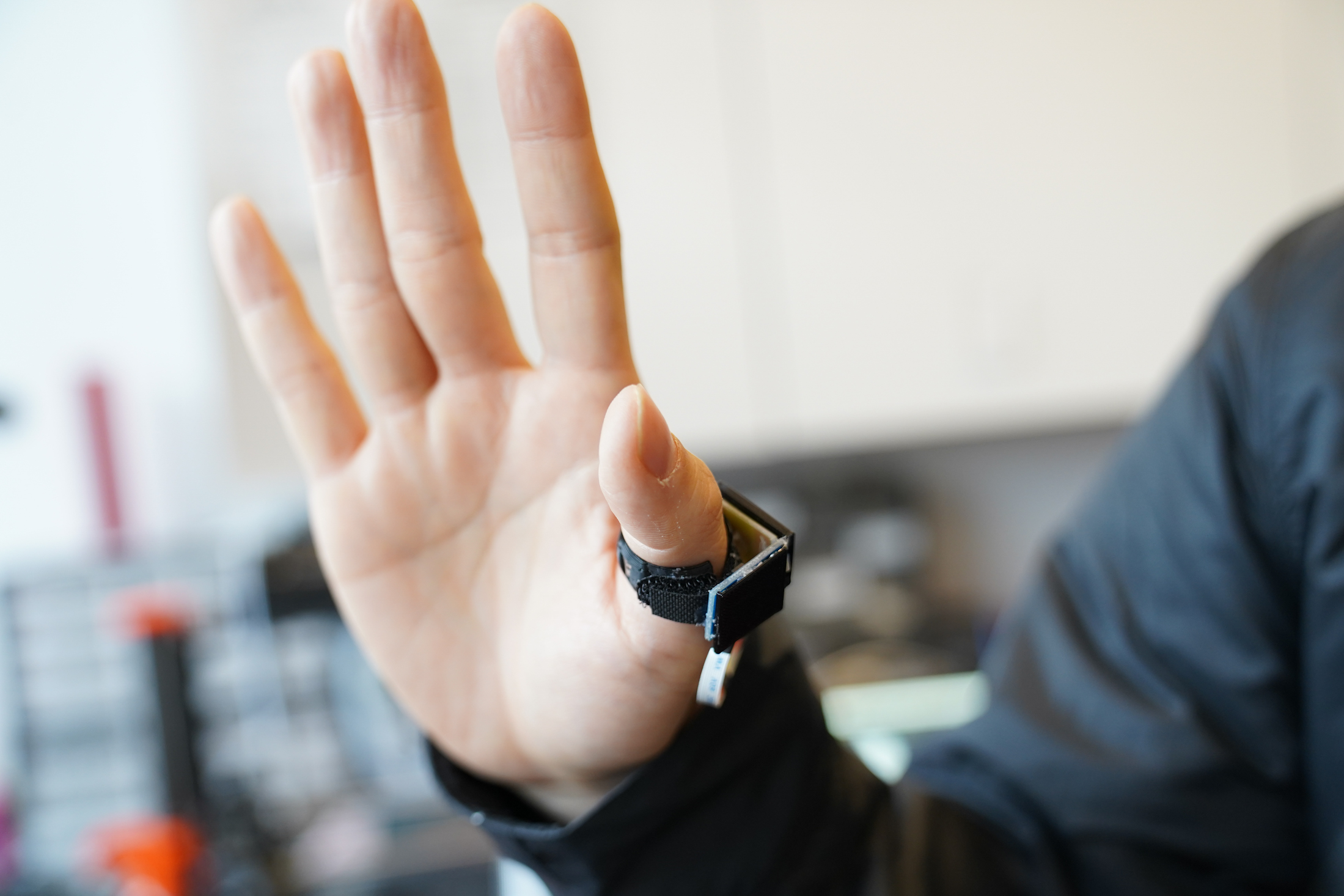 Person showing off the SpellRing.
Person showing off the SpellRing.
Practical Applications and Future Integrations
The research paper highlights SpellRing as the first wearable to combine inertial sensing with acoustics for real-time ASL fingerspelling. Demonstrations showcased its use for web searches, map navigation, and text input on smartphones. While not yet a universal solution, the team emphasizes its potential as a fast and accessible text entry tool. “Specifically, ASL fingerspelling can be significantly faster than typing on a smartphone’s virtual keyboard,” the research paper notes.
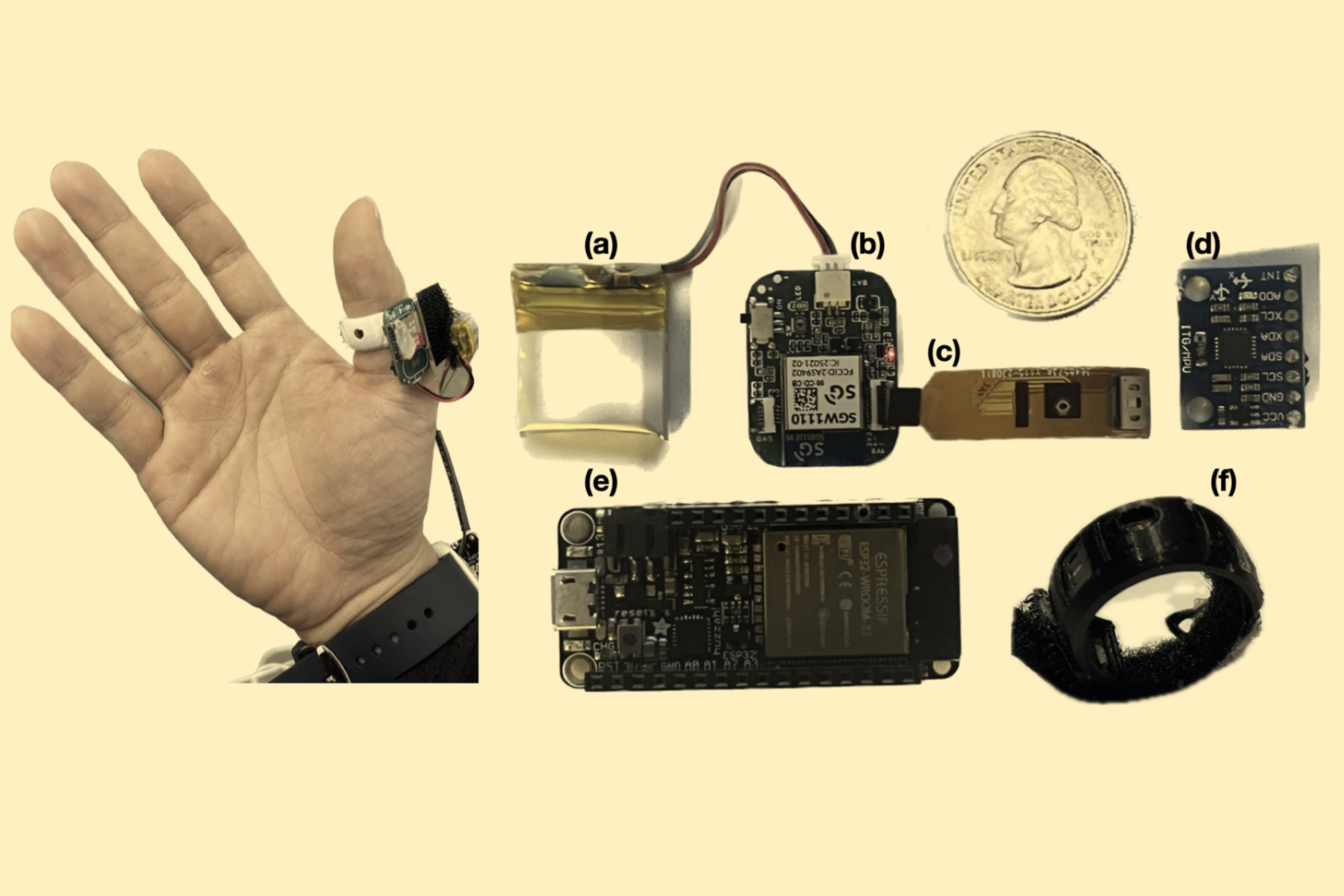 Hardware schematic for SpellRing.
Hardware schematic for SpellRing.
Future development plans include adding gesture recognition and expanding the vocabulary to include words and phrases. Hardware improvements aim to integrate all components, including the currently separate inertial sensor, onto a single board. The team also envisions incorporating a curved battery and achieving a design similar to commercially available smart rings. Integration with augmented reality (AR) glasses is also being explored, allowing combined hand gesture tracking and visual interpretation for more seamless communication. The research will be presented at the Association of Computing Machinery’s Conference on Human Factors in Computing Systems in Japan. Research Paper
Conclusion
SpellRing represents a significant step forward in accessible technology. Its potential to bridge communication gaps and provide a convenient text input method is promising. With continued development and refinement, this innovative smart ring could revolutionize how we interact with technology and each other.



